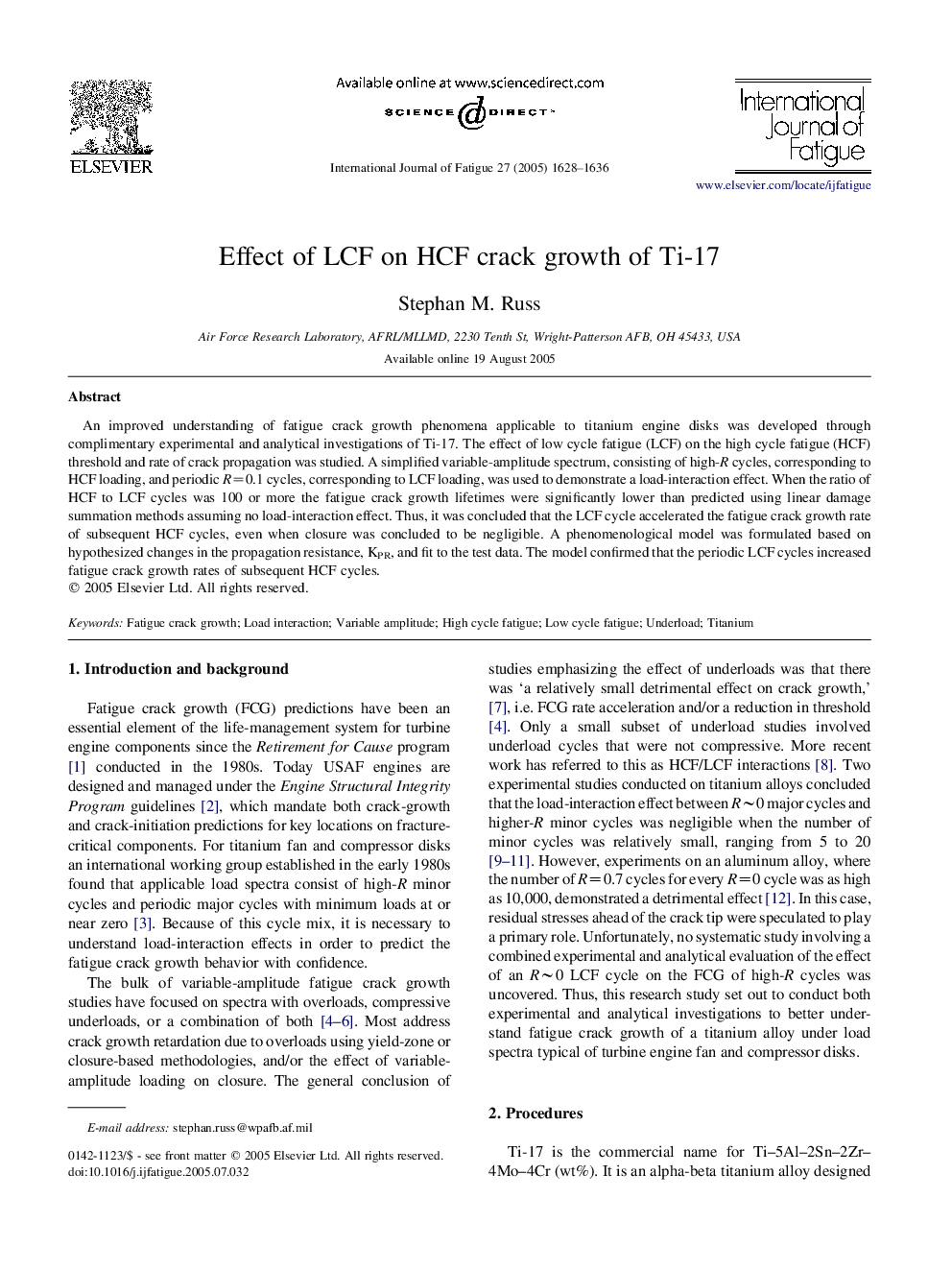| Article ID | Journal | Published Year | Pages | File Type |
|---|---|---|---|---|
| 9703906 | International Journal of Fatigue | 2005 | 9 Pages |
Abstract
An improved understanding of fatigue crack growth phenomena applicable to titanium engine disks was developed through complimentary experimental and analytical investigations of Ti-17. The effect of low cycle fatigue (LCF) on the high cycle fatigue (HCF) threshold and rate of crack propagation was studied. A simplified variable-amplitude spectrum, consisting of high-R cycles, corresponding to HCF loading, and periodic R=0.1 cycles, corresponding to LCF loading, was used to demonstrate a load-interaction effect. When the ratio of HCF to LCF cycles was 100 or more the fatigue crack growth lifetimes were significantly lower than predicted using linear damage summation methods assuming no load-interaction effect. Thus, it was concluded that the LCF cycle accelerated the fatigue crack growth rate of subsequent HCF cycles, even when closure was concluded to be negligible. A phenomenological model was formulated based on hypothesized changes in the propagation resistance, KPR, and fit to the test data. The model confirmed that the periodic LCF cycles increased fatigue crack growth rates of subsequent HCF cycles.
Keywords
Related Topics
Physical Sciences and Engineering
Engineering
Mechanical Engineering
Authors
Stephan M. Russ,
